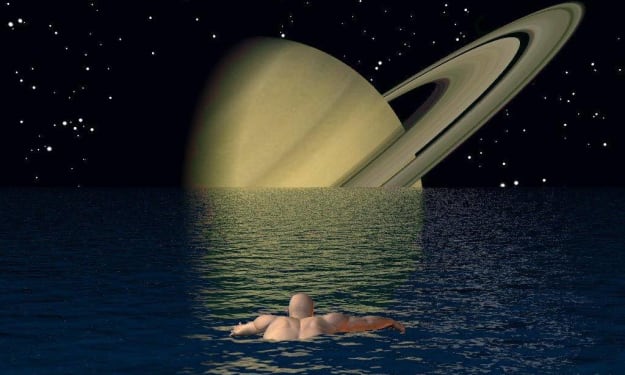
Astronomy is often regarded as the oldest science, born out of our curiosity about the sky. Digital images of the beige planet, surrounded by beige and black rings, set against a pitch-black background. The study of space above the Earth's atmosphere is called astronomy. Named after a Greek astronomer, it studies stars, planets, comets, galaxies, and larger objects in the universe.
More specifically, it studies the formation and evolution of the universe, understands the physical and chemical properties of celestial bodies, and measures their motion. Astronomy can also test basic theories of physics, such as relativity.
For most people, astronomical phenomena are mysterious and grand, and the stars are vast. When we gaze at the starry night, we always have a strange feeling. Its wondrous spectacle is like an open door to an endless and mysterious world. So astronomy also evokes an existential question: Where do we come from? Where do we go? Are we alone in the universe? Many of the great astronomers were initially drawn to these cosmic mysteries.
Astronomy also has a practical and 'down to earth' side, although this is not so obvious today. Since ancient times, we have observed the movement of the universe in order to locate the here and now in the vast expanse of space and distant time. Thus, prehistoric humans found a relationship between variations in the length of the sun and the seasonal cycle, which helped them plan hunting and food gathering. In the same way, in ancient times farmers arranged their farming or navigators located themselves at sea by observing the position of the stars.
In ancient times, astrometry was the primary function of astronomers, which was to make measurements of the positions of stars and planets. The general public is also interested in this work: we believe that the position of celestial bodies has an effect on events on Earth. Astrology, which makes predictions about the future based on these observations, is also considered a branch of astronomy. Astrology has also been an important part of the work of astronomers for centuries.
A very bright red star in pitch black, surrounded by a beige ring and white blobs, the white blob is surrounded by purple and gray clouds, the darker the closer to the center.
Modern astronomy was born during the Renaissance, thanks to advances in mathematics and the development of observing instruments, such as telescopes. As scientists studied gravity further, a new discipline emerged: celestial mechanics. From then on, we can mathematically predict the motion of celestial bodies. Astrometry and astromechanics are the two main fields that astronomers are engaged in. At the same time, astrology was considered a pseudoscience and no longer promoted by astronomical scientists.
Since the 19th century, with the advent of the electromagnetic spectrum and the atomic world, a new branch of astronomy has emerged: astrophysics, which is an important field of study in our time. Today, astronomy consists of the following subdisciplines:
1. Astrometry, which mainly measures the positions of stars and other planets (now realized by CCD cameras and computers).
2. Stellar astronomy, the study of the origin, formation and evolution of stars.
3. Galactic astronomy, the study of the structure of the Milky Way and its components.
4. Astrophysics, the study of the physics of the universe and the physical properties of its components (brightness, temperature, chemical composition).
5. Cosmology, the study of the origin and evolution of the universe as a whole.
These fields of study involve two disciplines that fall within the purview of geologists and biologists: planetary science, the study of asteroids, comets, and planets. And astrobiology, the study of the possibility of survival in the universe.
At present, professional astronomers are deeply educated in the field of astrophysics, and almost all their observations are conducted within the framework of astrophysics. The proposed theory is tested against new observations, which in turn confirm or refute the proposed theory or help advance the new theory. This is a real dialogue between theory and observation.
Amateur astronomers also play an important role in research; Its most important role is to track changing stars and find new asteroids and comets.





Comments
There are no comments for this story
Be the first to respond and start the conversation.